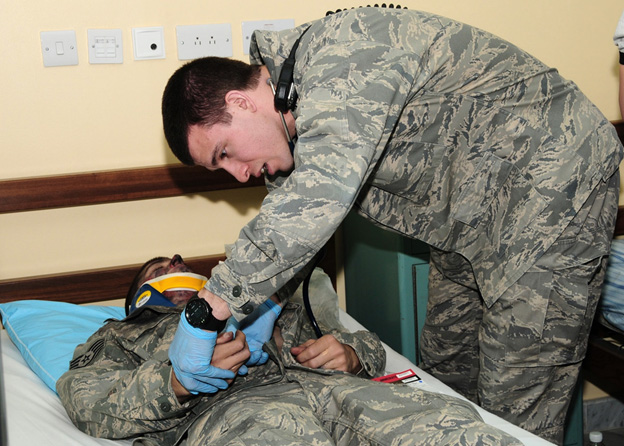Explosive blasts induce complex injury types which can be characterized into various categories of physical trauma. One such category – quaternary blast injuries – includes burns and incapacitation from inhaled toxic fumes. The term "inhalation injury" is a nonspecific term that refers to injury of the respiratory tract and/or lung tissue,1 the causes of which include heat, smoke, or chemical irritants that make their way into the airway during breathing. Additionally, lung infection can develop in the days following the initial injury. In a recent publication, Galeiras and colleagues2 systematically compiled, reviewed, and analyzed the noninterventional medical literature from 1990 to 2018 that investigated in-hospital mortality predictors among burn patients. The authors sought to determine if there was a direct correlation between inhalation injury in burn patients and mortality.
The chosen studies compiled over 400,000 burn patients of both sexes with ages from 10 to 76.5 years. Patient burns ranged from mild to severe and those with resultant inhalation injuries were from both civilian and combat-related burns. Studies included both general hospital admissions and intensive care unit (ICU) admissions; patients were diagnosed based on the results of clinical findings and secondary tests. The two main focuses of the analyses were: (1) the inhalation injury prevalence based on the total number of burn patients and (2) inhalation injury as a predictor of death in burn patients. Data compiled across 51 studies revealed that 10.8 percent of all burn patients had inhalation injuries. Burn patients admitted to the ICU had higher rates of inhalation injury at 34.8 percent. Higher prevalence estimates were observed in older patients and patients with extensive dermal burns. The mortality rate for ICU burn patients (20.7 percent) was more than two times as much as the mortality rate for all burn patients (8.3 percent).
One of the major obstacles faced when studying this type of injury is that there is not one universal definition or diagnostic criteria of inhalation injury for clinicians. Furthermore, the clinical studies available contain substantial variability in reported prevalence of inhalation injury due to many factors and despite advances in the management of inhalation injury in recent years, there is not a direct reduction in the effect of this injury on mortality over time.
Future research and research collaborations should address these gaps for the benefit of Service members and the clinical personnel caring for them.


1 Woodson, C.L. "Diagnosis and treatment of inhalation injury." In: Total Burn Care, 4 ed, Herndon DN (Ed), 2009.
2 Galeiras, R., Seoane-Quiroga, L., & Pértega-Díaz, S. (2020). "Prevalence and prognostic impact of inhalation injury among burn patients: A systematic review and meta-analysis." Journal of Trauma and Acute Care Surgery, 88(2), 330-344.
Your 15 minute session will timeout in approximately 10 minutes.
If you're in the middle of entering information, please close this warning and save your progress (if possible) or finish up your task.
If your session fully times out, you will lose any un-saved work.
Your current Blast Injury Research Program session has expired.
Your next click will take you away from the private area, and you will lose any work you have in-progress.
Please enter your email address, and try again.